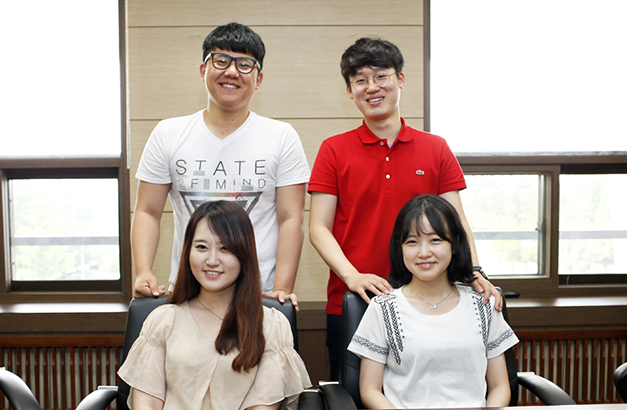Samsung Electronics Sponsors YU’s ICE Club! N
No.88693- Writer YU
- Date : 2014.07.07 16:18
- Views : 9075
A Club of Department of Information and Communication Engineering was selected by Samsung Electronics as one of the 'Samsung Software Friendship'. Samsung Electronics placed a premium on the club’s 'Wireless communication emergency broadcast' idea, and would fund for club materials and activity support for a year.
[July 3, 2014]

YU (President Noh Seok-kyun) academic clubs will receive sponsorships from Samsung Electronics.
The Department of Information and Communication Engineering's network programming academic club 'How To' was selected for the 'Samsung Software Friendship' club. 'Samsung Software Friendship' is a program that finds and excellent software R&D clubs and fund their activities in order to foster excellent R&D human resources of the future by Samsung Electronics and Samsung Software Membership. Clubs are selected through contests every year for college clubs around the nation.
In this year's contest, 200 clubs that passed the initial document review of college clubs around the nation that submitted their club activity goal and plans participated in presentation reviews. Final presentation reviews were conducted by regions, and finally, a total of 25 clubs were selected in June through on-site evaluations and club member interviews. 'How To' club will receive a total of 8 million won including 5 million won for materials expenses and 3 million won for activity funding by Samsung Electronics for one year.
'How To' proposed a 'wireless emergency broadcast' system and received good reviews from judges. The 'wireless communication emergency broadcast system' installs wireless communication equipment in areas with high risks of emergencies such as in seas, mountain regions and high-rise buildings so that if anyone uses the equipment to request rescue, it is transmitted to rescue agencies immediately through a specific wireless frequency. This allows quick and multiple requests on emergencies even if the witness or person in the disaster has no other wireless or wired communication tools.
Kim Jae-bong (23), a junior who is the vice-president of the club, said, "We have witnessed emergencies occurring, but unable to transmit the situation properly resulting in huge damages, such as the Saewol ferry incident." He added, "If a person who becomes aware of the incident uses the emergency broadcast equipment and send it to multiple rescue agencies simultaneously, we thought that it could help prevent bigger damages by taking preemptive actions." Club members said, "The wireless communication emergency broadcast is just an idea for now," and added, "When we receive the funds, we plan to conduct research on configuration potential, practicality, and expandability."
'How To' was first made in 1998 and is a large club made up of 70 information and communication engineering students who look at problems on 'how to' solve them. This club not only holds study groups for students, but also cooperates with the Department of Information and Communication Engineering and the next-generation networking research lab (advisor Kim Young-tak) to carry out various projects including research on practical technologies.
The president of the club, Seo Gyu-baek (23), said, "How To is not a place just to socialize, but an academic club interested in network programming," and added, "Our club provides education on our major, as well as foreign language studies to help prepare students to find jobs in the future, which led many of our seniors to enter conglomerates despite the difficult job market."